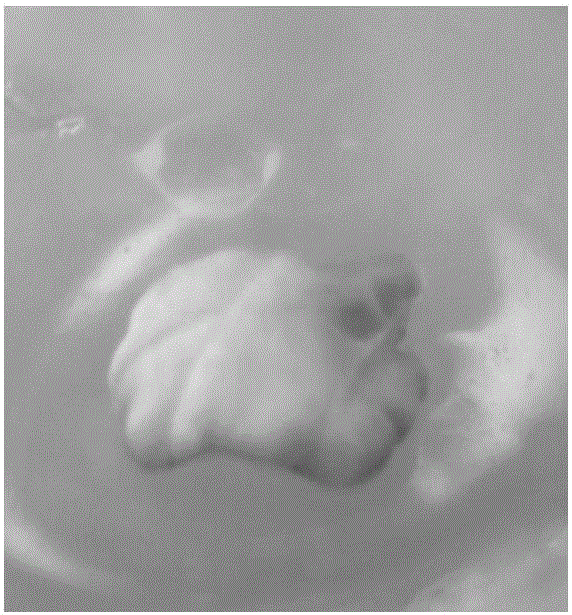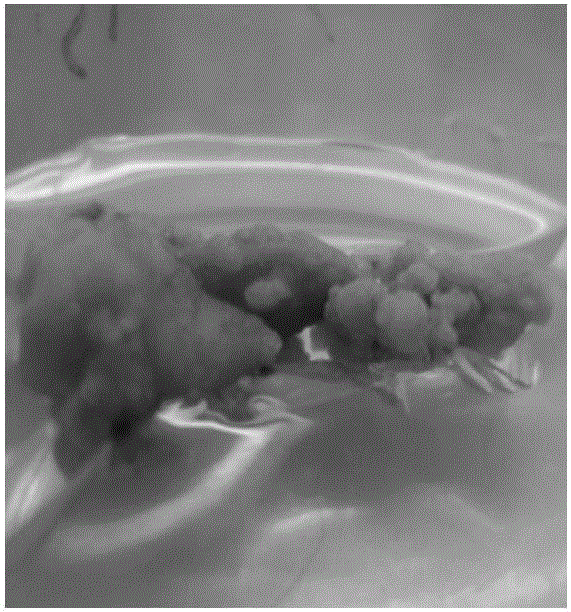Culture medium and culture method for inducing callus differentiation through peony leaves
A technology of induction medium and differentiation medium, which is applied in the field of plant tissue culture, can solve problems such as failure to form root system, stem tip propagation without dedifferentiation process, vitrification, etc., and achieve the effect of saving manpower and reducing the risk of pollution
- Summary
- Abstract
- Description
- Claims
- Application Information
AI Technical Summary
Problems solved by technology
Method used
Image
Examples
Embodiment 1
[0021] The research work was carried out with the Paeoniae osmanthus cultivar 'Zifengyu' planted in the peony germplasm resource nursery of the College of Horticulture and Plant Protection, Yangzhou University:
[0022] (1) Data collection time: March 28, 2014;
[0023] (2) material selection: select young and tender leaves;
[0024] (3) Sterilization and inoculation of leaves:
[0025] After the young leaves are picked back, the sterilization method of combining alcohol and mercury chloride is used. The specific steps are as follows:
[0026] ①Rinse the young leaves in running water for 10 minutes to remove the external soil, then wash them with detergent (Shanghai Hehuangbaimao Co., Ltd.), and rinse them with running water;
[0027] ②Place the young leaves on an ultra-clean workbench, place them in a beaker, sterilize with 75% alcohol for 30 seconds, and rinse them with sterile water for 5-6 times;
[0028] ③Sterilize with 0.1% mercuric chloride (Shanghai Zhongxi Chemical...
PUM
 Login to View More
Login to View More Abstract
Description
Claims
Application Information
 Login to View More
Login to View More - R&D
- Intellectual Property
- Life Sciences
- Materials
- Tech Scout
- Unparalleled Data Quality
- Higher Quality Content
- 60% Fewer Hallucinations
Browse by: Latest US Patents, China's latest patents, Technical Efficacy Thesaurus, Application Domain, Technology Topic, Popular Technical Reports.
© 2025 PatSnap. All rights reserved.Legal|Privacy policy|Modern Slavery Act Transparency Statement|Sitemap|About US| Contact US: help@patsnap.com



